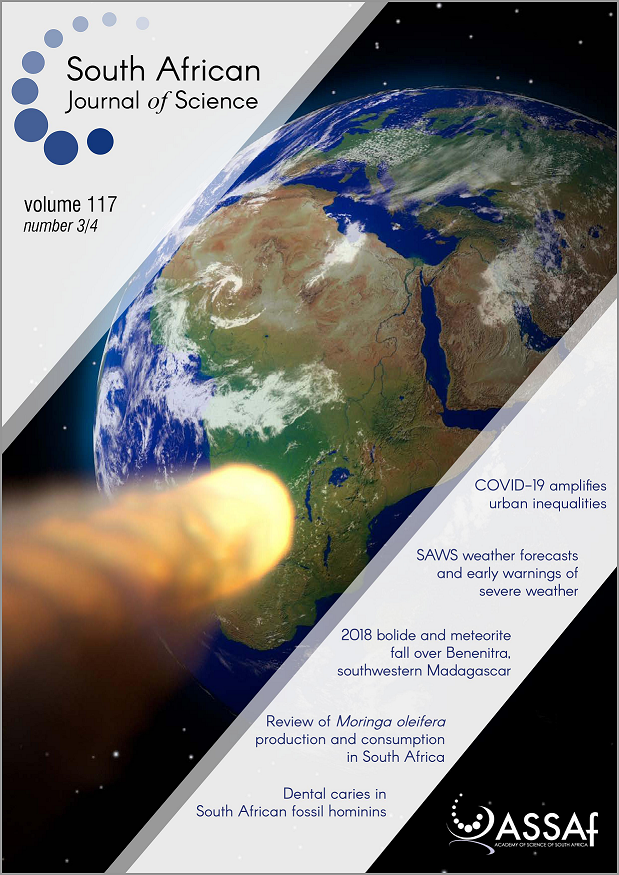Foliar fungi of the enigmatic desert plant Welwitschia mirabilis show little adaptation to their unique host plant
DOI:
https://doi.org/10.17159/sajs.2021/7666Keywords:
Welwitschia mirabilis, Namib Desert, foliar fungi, Alternaria, AureobasidiumAbstract
Foliar fungi, especially endophytic fungi, constitute an important part of the microbiome of plants. Yet little is known about the composition of these communities. In this study, we isolated fungi from leaf tissues of the desert plant Welwitschia mirabilis to determine the culturable diversity of the foliar fungal community. The isolated fungal taxa, which grouped into 17 distinct lineages, were identified by sequencing elongation factor 1 alpha, beta-tubulin 1, beta-tubulin 2 and the internal transcribed spacer region. The culturable community was mainly composed of cosmopolitan fungal genera despite the unique taxonomic position of the plant and its geographic isolation. To test for endemism in two of the common fungal genera, Alternaria and Aureobasidium, we built haplotype networks using a global data set. Even this broad data set showed little evidence for specialisation within this unique host or its geographical location. The data suggest that the culturable members of communities of leaf-associated fungi in habitats with little plant coverage, such as the Namib Desert, are mainly established by long-distance aerially distributed fungal inocula and few of these taxa co-evolve with the host within the habitat.
Significance:
- The culturable members of fungal communities associated with an ecological and evolutionary isolated plant have not co-speciated with their hosts, but to a large extent are composed of globally distributed fungal species.
- Harsh environmental conditions and the geographic isolation of host plants seem to favour ubiquitous fungal species over more specialist fungal species.
Open data sets*: https://www.ncbi.nlm.nih.gov/genbank
*see accession numbers in text
Downloads
Published
Issue
Section
License

All articles are published under a Creative Commons Attribution 4.0 International Licence
Copyright is retained by the authors. Readers are welcome to reproduce, share and adapt the content without permission provided the source is attributed.
Disclaimer: The publisher and editors accept no responsibility for statements made by the authors
How to Cite
- Abstract 967
- PDF 659
- EPUB 159
- XML 191
- Supplementary Material 69












.png)